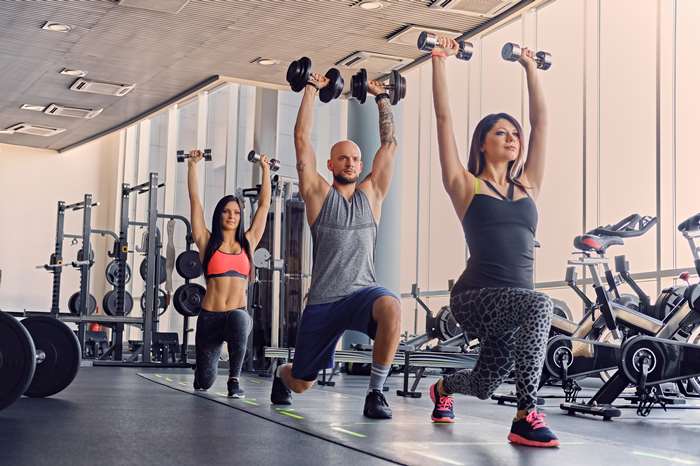Gyms and leisure centres

Gym
Investing time in a gym risk assessment protects members and ensures you comply with health and safety guidance. Moreover, it makes you a responsible gym owner who prioritises the safety of staff and clients. A gym risk assessment can cover a number of areas, from hygiene and ventilation to equipment maintenance and member education.
Ten safety essentials to start
Take a look at our ten safety essentials pages. These pages will guide you through the essentials for managing health and safety in your business. The areas below contain specialist advice for you to consider when writing your risk assessments and implementing safe systems of work & procedures to keep staff and visitors safe.
Risk assessment
When undertaking your risk assessment for your gym or leisure centre you may wish to look at these examples to give you ideas of hazards and control measures:
- Sport England - creating a risk assessment
- Active Nottingham template risk assessment
- SSERC Fitness suite
- Elemental Fitness kick boxing
*These examples have been found to help and guide you, they are not endorsed by Lancaster City Council.
You may also need to consider the risks from;
- Your office
- Your cafe or restaurant
- Your swimming pool or spa
- UV sunbed equipment and the Sunbed Regulations
Slip, trips, and falls
The most common cause of injury in the workplace slips, trips, and falls can happen in the gym due to spilled water, excess sweat, or the gym floor being cleaned without adequate signage. There may also be uneven floors or equipment creating obstacles which can cause people to trip and fall
Falling objects
Some equipment, like dumbbells or ab mats may be stored at a height (off the floor). If these objects fall, they could cause mild to moderate injuries to gym goers and staff alike
Equipment related injuries
Using any kind of gym equipment comes with a risk, and the potential for accidents in the gym to happen. Falling off treadmills, dropping weights or trapping fingers are all risks if equipment is not used properly and with adequate care. Equipment related accidents can be reduced if correct training is provided to staff and customers are instructed (induction) on how to use them, and basic instructions are located on or near equipment.
Adequate supervision
Whilst users of the gym should take personal responsibility, it is also important that gym staff ensure people are using equipment safely and intervene if equipment is being used incorrectly. This applies to those using the open gym and people in group fitness classes.
Equipment maintenance
It is imperative for gym owners and staff to regularly inspect and maintain all equipment to minimise the risk of accidents in the gym related to gym equipment. This includes cardio equipment like treadmills and rowers, as well as free weights including barbells and dumbbells.
Regular inspections should be carried out to identify faulty or damaged equipment. Anything requiring repairs should be removed from use until the equipment has been fixed or replaced. There also ought to be clear guidelines to ensure proper usage of equipment and to educate gym goers about potential hazards in a gym.
See this example checklist from Sportsafe
Hygiene & infection control
The nature of the gym environment can mean that germs are spread easily. Many people come into contact with each other and use the same equipment, which can lead to the spread of infection.Keep your tackle clean Keep your tackle clean (PDF, 205KB) is a leaflet offering guidance to members/athletes. Regular cleaning schedules should be implemented to sanitise high-touch areas, such as exercise mats, weight benches, and changing rooms. There should also be disinfectant wipes, and sprays readily available for members to wipe down equipment before and after use. See more guidance on Sports infection prevention and control and guidance (PDF, 94KB)
Space and ventilation
There should be enough space on the gym floor for people to work out safely without being close enough to others to cause injury. In addition, gyms will need to assess the available floor space and know how many people can safely inhabit the gym floor as part of the gym risk assessment. Not leaving enough room between gym equipment can also create hazards in the gym, and there should be enough room for anyone in the gym to easily evacuate in an emergency, such as a fire.
Natural airflow, air conditioning, and proper ventilation systems should be in place and detailed in the gym risk assessment, to stop the spread of airborne illnesses. It also contributes to a fresher and more enjoyable gym environment.
Fire Safety
You will also need to ensure that you have suitable fire precautions in place;
- A guide to making your small non-domestic premises safe from fire
- Small and medium places of assembly
- Large places of assembly
Fire safety precautions are enforced by Lancashire Fire and Rescue and not the Council.
Last updated: 16 August 2024
